- Home
- Melissa de la Cruz
How to Become Famous in Two Weeks or Less Page 3
How to Become Famous in Two Weeks or Less Read online
Page 3
D. They couldn’t pay you enough money to go to such a morally decrepit, corrupt zoo where no one boasts an ounce of individuality or intellect! But you’ll RSVP to P. Diddy’s “all-white” July Fourth party anyway.
E. You keep chewing your gum—and blow bubbles (or something else)—while waiting. The guy who’s carrying your baggage is kind of cute….
F. Where are the Hamptons?
3. You’re on the front page of a tabloid as a result of canoodling with someone other than your significant other. Your reaction is as follows:
A. Fire your publicist (it’s probably her fault this got into the press) and hire her rival, who issues a public statement of denial. And you slap a $10 million lawsuit on the paper.
B. Buy a copy of the magazine for a good laugh.
C. Deny the allegations, as you were only examining your fear of intimacy. The relationship was your therapist’s idea, after all.
D. Read all about it from behind bars after punching the photographer who snapped your picture.
E. Lie to your boyfriend and tell him it was nothing. Really, you only did it to get the role.
F. Think, That’s odd … I didn’t know that plushies were considered cheating.
THE QUIZ KEY
FIND OUT WHICH BRAND IS RIGHT FOR YOU
• If you answered A to all of the above, you’re “the Power Girl.” That means you’re the fireball who can get things done. Here’s how to be the diva: Never leave without your cell phone, trusty two-way pager, and Palm Pilot. Tell friends to call during important appointments so you come across as busy and have to hang up on them. Vice versa, when important people call and you’re watching E! with a friend on her couch, say you’re in the middle of an important appointment and hang up on them too. Constantly fiddle with your BlackBerry, even if you’re just sending yourself love letters. Raise your voice a few dozen decibels. You want everyone around you to know what you’re saying at all times. Even if you’re just supersizing your fries to go. Warning: You may make a lot of enemies, but who cares … you’re famous.
• If you answered B to all of the above, you’re “the Holly Golightly.” That means you’re eccentric, stylish, and seemingly wealthy—even if you are about to be evicted because you can’t pay rent or can’t afford dinner unless your date is paying. You’re dolled up at all times—in the pouring rain and on a Sunday-morning trip to the grocery store, where you wear an old prom dress over jeans. You do quirky things like name your cat “Cat,” go to black-tie parties barefoot, and travel by bicycle with a banana seat. You invite ten people for drinks and two hundred show up to dance on your roof. Your date of choice: the Tortured Artiste.
• If you answered C to all of the above, you’re “the Tortured Artiste.” That’s right, you’re a misunderstood genius. You’re always working on your novel, which you never seem to finish. You adore Japanese Noh theater, French New Wave, and Italian noir. You carry a copy of Jack Kerouac in your bag so you can skim it during off hours while you’re stocking new tapes at the Blockbuster. Oooh. American Pie 2!
• If you answered D to all of the above, you’re “the Grumpy Recluse.” You’ve got a chip on your shoulder the size of a memoir. Complain about never having privacy even when you’re always out in public. Don’t let people take photos of you—hold your hand up in front of the camera and pull a Sean Penn. Jackets are worn over the head. Drinking your own urine is optional.
• If you answered E to all of the above, you’re “the Bimbo.” You need little more than a large cup size and an un-apologetic desire to show them off. Take cues from Pamela Anderson, who was discovered because of her short shirt while watching a football game. Sure, she was cute, but she attained her A-list status only after pumping her chest up to triple Ds. Perfect your voice, which should either be deep and breathy or high and squeaky. Call people “baby,” “honey,” and “doll-face.” Giggle.
• If you answered F to all of the above, you’re “the Weirdo.” This persona usually comes after you’ve tried and failed at any of the above identities. It is the brand to acquire after making a series of mistakes. Once you’re here, it’s okay to take everything one step too far. Consider investing in an oxygen mask, which should be worn at all times, and travel with your chimp, Bubbles. Warning: this is only for advanced levels of fame.
• Double Take: If you’re afraid to take on any of the above personas by yourself, don’t worry. Whether you’re wholesome and sweet, like the Olsen twins, buxom and recovering from bulimia like the Playboy Playmates, the Barbie twins, or bad to the bone on the tennis court like the Williams girls, famous people make a bigger impact when they come in twos. If you don’t have a sister, rope your best friend into pretending to be yours. Dress similarly. Go everywhere together. You’ll be easier to remember when there are more than one of you. If you err toward the wild side and you’re built with a killer body, your brand may be best showcased as “the hot-blooded, hard-partying hotties who hit nightclubs, wearing almost nothing.” Repeat every night until gossip columnists start spreading nasty rumors about you.
YOUR FAME PAPERS
A CORRESPONDENCE COURSE
I opened the box skeptically. “What is it?” I asked my sister as I poked at the tissue I found inside. I distinctly remembered having asked for a gift certificate from J. Crew for my twenty-third birthday.
“They’re note cards.”
“Huh,” I said, taking one out. “What do I do with these?”
She rolled her eyes. “They’re for, you know, correspondence.”
This was in 1994, when penning letters was hardly obsolete, but only nerds who wanted to trade Star Wars action figures were on-line. I hadn’t written a letter since 1984. I rifled the box. Inside, there were fifty ivory eighty-pound-card-stock note cards from Smythson of Bond Street, the posh stationery store in London where celebs and socialites get their monogrammed stationery. Emblazoned on the top was my full name, Melissa Ann de la Cruz, and on the bottom it proclaimed, New York City.
“I didn’t put your whole address in because you move all the time,” she said diplomatically, refraining from mentioning that my frequent change of residence was due to the fact I seemed to always get stuck with roommates who preferred to live in darkness rather than change lightbulbs, brushed their teeth in the bathtub so that it left an oily blue ring on the tile, and left hair-balls of unknown origin in the refrigerator.
I put the box away. Correspondence? Was she serious? Who the hell would I write to?
Later that year, I almost sold my first novel. The editor who turned it down was intrigued enough to ask to buy me a drink at a bar downtown. He was charming and encouraging. The next day I took out one of my monogrammed note cards and thanked him for a pleasant evening. He returned the favor by sending me a thick engraved note card of his own, thanking me for my note and complimenting me on my “beautiful note cards.” Thus we began a correspondence.
Thrilled with my stationery success, I began to use them for everything. I was a zealous pen pal. I imagined myself as a heroine of an Edith Wharton novel. I even learned the proper etiquette for their use—never write on the back of the card (so gauche), and draw a small vertical line through your first name (so says Tiffany & Co.).
I thanked hosts for dinner parties, and relatives for presents I received, and I sent greetings with them the year I forgot to buy Christmas cards. I stuck them on birthday presents. Friends marveled. “They’re so thick! They’re so classy,” they shrieked. My note cards never failed to impress. I garnered a well-deserved reputation as the slightly old-fashioned girl with the fabulous note cards. My mailbox was soon stuffed with similarly thick, ivory-colored monogrammed cards from gratified and very polite acquaintances.
Then the inevitable happened.
I was down to my last note card. There it sat, lonesome in the box, covered in well-worn tissues. I scribbled a witty aperçu to a friend who had bought me drinks the night before.
I mailed it off with a heavy heart.
/>
Then I switched on my computer and e-mailed a dancing hamster to forty of my closest friends.
CARD-CARRYING MEMBER OF THE CLUB
Image is everything, especially in the media circle, where people shun you if you’re carrying last season’s handbag (God forbid). When you start thinking of yourself as a commodity, everything has to have your personal mark, whether it’s your signature Chanel red lipstick or your business card.
After three years of using the “Oh, no! I left my cards in my other handbag. I switched bags before I left this morning” excuse when people asked me for the card I didn’t have, I decided it was time to make a solid investment in a piece of paper that would give the impression that I’m sophisticated, cool, and far from cheap.
I asked a graphic designer friend to help me source the perfect paper—one with girth and strength, the kind of tree by-product that says I’m durable, tough, expensive, but not pretentious. I sampled all the traditional card stock—sixty pound, eighty pound, one hundred pound. Nothing was good enough. I wanted something different, something no one had seen before, something that would make a bold statement, something no one would want to throw away. There’s nothing worse than flimsy paper.
We came across mat board, which is traditionally used for matting drawings or photographs. It was hard, thick, strong, and practically unbendable. It was a bit more than I wanted to spend, but I rationalized the purchase by telling myself that my card would be an extension of myself. I am my own corporation and I want to dazzle people when I hand it off.
I went simple with the design scheme because I wanted the paper to speak for itself. I chose letters that resembled old-school-type writing fonts and had it pressed in, so it looked almost engraved. It said nothing more than my name, address, e-mail, and phone numbers, and yet it said so much more. It was chic, modern, minimalist, fabulous—everything I wanted my card (and image) to be.
The second I saw the mock-up printed, I thought, Who’s not going to hire me to write a story when they see this? I was in, even if it cost $1,600 for a thousand cards! But every penny I spent was worth it. Once, I went into an art gallery and the owner, whom I had never met, saw my card and said, “I have one of your cards. It was given to me as an example of good fonts from one of my artists” (and that artist was also someone I had never met, who had gotten my card from someone else who passed it on as “inspiration”). The card has become my signature, the piece of me that I leave behind wherever I go.
DESIGNING YOUR CALLING CARD
As a famous person, you are constantly promoting yourself. You need standout business cards and matching stationery to remind people of your brand even when you’re not around. Splurge for special paper—the thicker or more colorful, the better. Keep the fonts and design consistent so people will automatically associate it—or anything like it—with you. Hand them out to everyone you meet—the nail salon manicurist, the hostess at the diner, the Gap salesperson of the week—and then everyone will start knowing you as “the girl with the cool card.”
Your card should include the following:
• Your name, whatever you answer to at the moment.
• Your address. Unless you’re a Holly Golightly, in which case it should read, “Traveling.”
• Phone, fax, and mobile numbers. You need to be reachable at all times.
• Watermarks, logos, or some kind of symbol that represents you, be it a Chinese character for danger or your family crest (even if you just created it for the sake of the card).
What to avoid putting on a calling card:
• Cheesy lines and mottos.
• Your job title. You never want to limit yourself to one thing.
• Your photo. This is not a yearbook!
GETTING YOUR ASSETS TOGETHER
As a famous person, there are some things you’ll need—a sample tape of you on television (even if it’s a home recording), a headshot, a bio. We call them your vitals. We had to organize these things, and you’ll need to, too.
REEL LIFE
In the past, people have asked me if I have a “reel,” which is a videotape of a television appearance in order to show producers or behind-the-scenes types that you know how to work the camera without looking like an eyesore. The only reel I had was an abomination. I was on a panel of relationship experts, commenting on the Darva Conger fiasco after the premiere of the show Who Wants to Marry a Millionaire. Every time the camera caught a glimpse of me, I got really uncomfortable and began to shift my eyes furiously back and forth, as if I were watching a tennis match between Agassi and Sampras. At the same time, I nervously played with the sleeves of my sweater, which were too long. And at one point I even hoisted myself up on my chair to sit Indian-style. It was my first television appearance and I’m sure the producers of the show prayed it would be my last. During my Marie Claire challenge, I was determined to get a better reel. The hard part about getting on television is that you either have to have experience (and a good reel) to get a gig—or do something that most people wouldn’t dream of doing (like eat a pile of gnats, walk on a tightrope fifty feet in the air, or live with eight strangers in the house to see what happens when people stop being polite).
A dermatologist friend was doing a segment on Entertainment Tonight. The bit? Women who have Botox parties. I had actually written an article about the rampant trend of uptown girls who gather at their dermatologist’s office—after hours—for sushi, gossip, and Botox. But I never thought I’d be the subject of this sort of thing—only the reporter. When he asked me if he could give me a shot of the wrinkle-paralyzing toxin on national television, I reluctantly agreed. I might not have needed Botox, but it was for my career—and the Marie Claire challenge—dammit! I put on my favorite Balenciaga ensemble for the appearance, did my hair and makeup, and went into his digs to do the deed.
When the TV crew arrived, I chatted it up for the camera with the rest of the girls, all there for the shoot. I threw in witty sound bites about how Botox has become the new Tupperware party and that it’s no more invasive than, say, getting your hair highlighted. They loved me. Until I propped myself up on the doctor’s chair and got ready for the money shot. For the record: I’m very squeamish about needles. The second the good doctor came close to my forehead, I squirmed and freaked out, turning my head away. The director yelled, “Cut,” and we tried again. Four takes later, the segment producer asked the doctor if someone else could be featured. There went my reel. And the furrow in my brow is even worse than it once was.
ASSEMBLING A PRESS KIT
A press kit is a marketing tool that is used to sell a product, person, place, or thing. It is sent out to all media people in order to inform them of something hot, trendy, new, or exciting. Like your card, it should represent your brand name. The design, font, paper, layout—even the folder, envelope, and stamp—should blend in a uniform manner, making it instantly recognizable. It’s all a part of your brand, which means you’ve got to package it right, because a good press kit will get you noticed, which will potentially lead to press attention.
Here is what you need:
• A glossy, flattering 8-by-10 photo. The glossier and the more flattering the better. Just make sure it still sort of looks like you and not your overprocessed twin.
• A short biography of your achievements and career and personal highlights. For example, career highlight: Calvin Klein crashed my birthday party; personal highlight: Calvin Klein crashed my birthday party.
• A list of your assets: celebrities you know, contacts in high places, your certification for erotic dancing.
• A “reel,” which is a videotape of you. It’s important to show people you look good on camera, even if you’re just being filmed by a boyfriend who knows his way around a camcorder.
See Step IV, Managing the Press Machine, to find out what to do with your press kit once you have one.
JUST SHOOT ME
Spring 2001, I had to get my picture taken because I needed an author’s
photo for the back of my upcoming book, Cat’s Meow, a comic novel about a wanna-be socialite (shameless plug here!). At the same time, many of my magazine editors were asking for a photograph of me to put on their contributors’ page (in the front) of the “book.” But the only flattering photographs I had of myself were from a wedding I attended two years ago or at the bar of the Four Seasons restaurant. The first one showed a parking lot in the background, not the most glamorous of venues. In the second, I was blond (and drunk). Neither was acceptable.
I called my friend Eva, a fashion photographer who specialized in striking pictorials involving avant-garde clothes and drag queens. She agreed to take my portrait one afternoon at her apartment in the Flatiron District. All I needed was a glossy 8-by-10, which would entice readers to pick up my novel and show magazine editors that my face would not cause readers to upchuck their Caesar salads. Being attractive was suddenly a real component to an author’s career. I once overheard a book editor lament about an author she had just signed: “The book is great, but I’m afraid we’re not going to get a lot of coverage. The author is quite hideous.”
GULP.
I prayed Eva would save me from such a terrible fate.
Eva was finishing lunch when I arrived. Her loft was just like her—stark, all white with black accents. Eva is six feet tall, platinum-haired, skinny, and wears only black clothing. She even has a German accent. She looks like a Dieter cliché, except she’s got a sense of humor about herself. One Halloween she and her friends went as the group from The Matrix. Let’s just say they didn’t even need costumes.
“Let’s go up to the roof,” she said. “I want to portray you as a true New York author.”

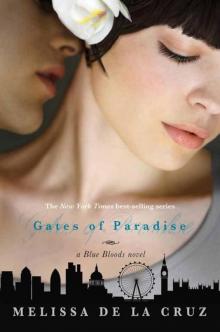 Gates of Paradise
Gates of Paradise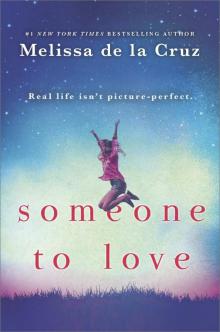 Someone to Love
Someone to Love Pride and Prejudice and Mistletoe
Pride and Prejudice and Mistletoe Serpent's Kiss
Serpent's Kiss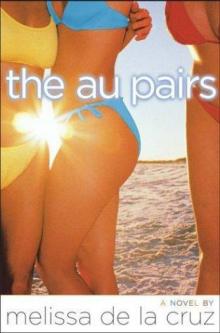 The Au Pairs
The Au Pairs Wolf Pact
Wolf Pact Witches 101: A Witches of East End Primer
Witches 101: A Witches of East End Primer Jealous?
Jealous?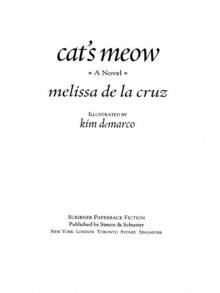 Cat's Meow
Cat's Meow Misguided Angel
Misguided Angel Birthday Vicious
Birthday Vicious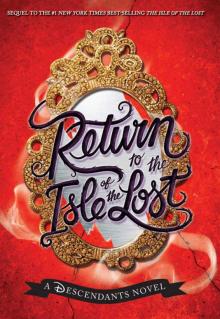 Return to the Isle of the Lost
Return to the Isle of the Lost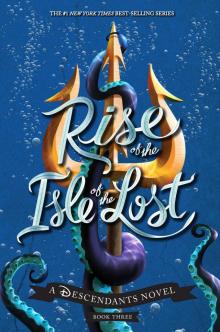 Rise of the Isle of the Lost
Rise of the Isle of the Lost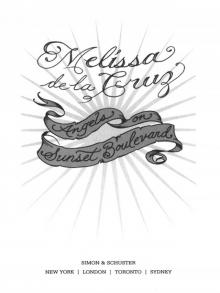 Angels on Sunset Boulevard
Angels on Sunset Boulevard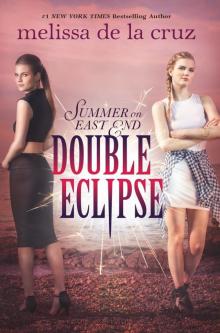 Double Eclipse
Double Eclipse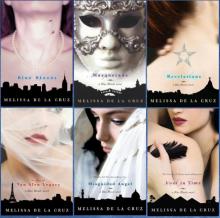 Blue Bloods
Blue Bloods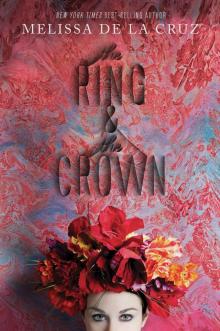 The Ring and the Crown
The Ring and the Crown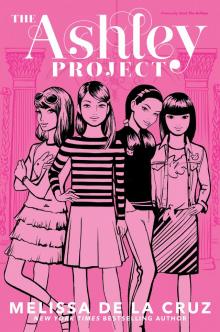 The Ashleys
The Ashleys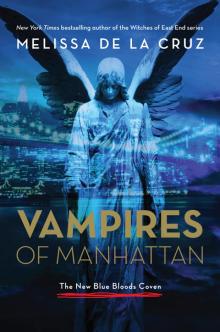 Les vampires de Manhattan
Les vampires de Manhattan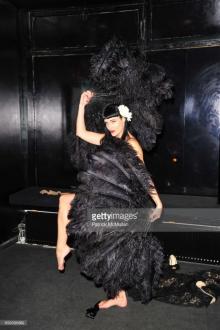 The Van Alen Legacy
The Van Alen Legacy Sun-Kissed
Sun-Kissed The Isle of the Lost
The Isle of the Lost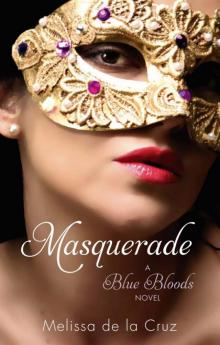 Masquerade
Masquerade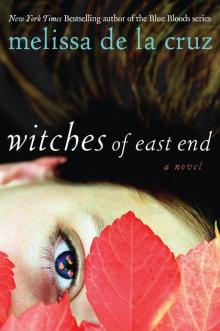 Witches of East End
Witches of East End Diary of the White Witch
Diary of the White Witch Crazy Hot
Crazy Hot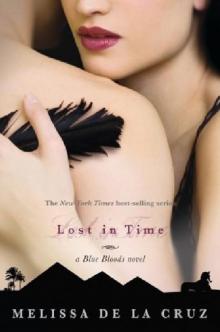 Lost in Time
Lost in Time White Nights: A Vampires of Manhattan Novel
White Nights: A Vampires of Manhattan Novel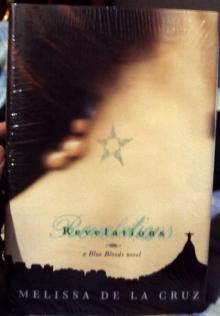 Revelations
Revelations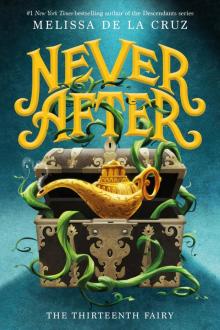 The Thirteenth Fairy
The Thirteenth Fairy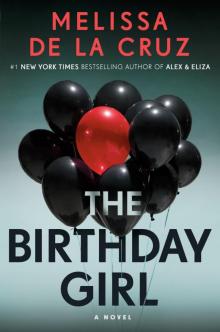 The Birthday Girl
The Birthday Girl Lip Gloss Jungle
Lip Gloss Jungle Fresh Off the Boat
Fresh Off the Boat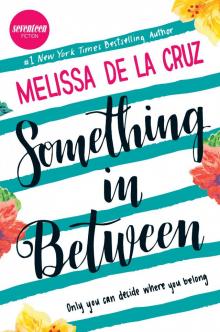 Something in Between
Something in Between Winds of Salem
Winds of Salem The Queen's Assassin
The Queen's Assassin Love & War
Love & War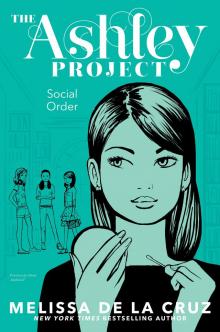 Social Order
Social Order Skinny Dipping
Skinny Dipping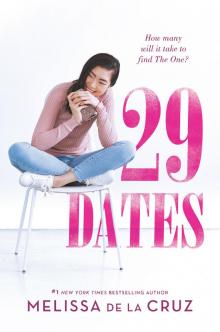 29 Dates
29 Dates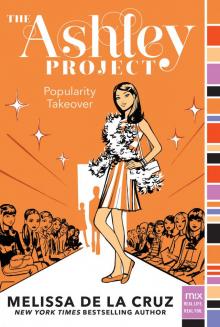 Popularity Takeover
Popularity Takeover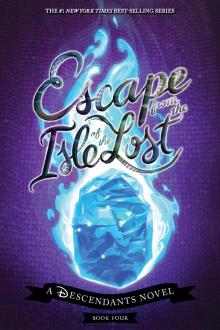 Escape from the Isle of the Lost
Escape from the Isle of the Lost Beach Lane
Beach Lane Bloody Valentine
Bloody Valentine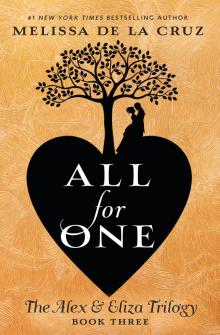 All for One
All for One Wolf Pact: A Wolf Pact Novel
Wolf Pact: A Wolf Pact Novel The au pairs skinny-dipping
The au pairs skinny-dipping Lip Gloss Jungle (Ashleys)
Lip Gloss Jungle (Ashleys) Crazy Hot (Au Pairs)
Crazy Hot (Au Pairs)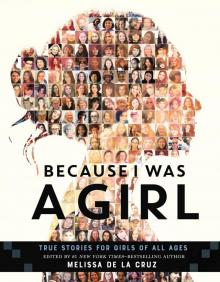 Because I Was a Girl
Because I Was a Girl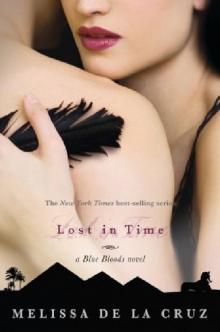 Blue Bloods 6 - Lost in Time
Blue Bloods 6 - Lost in Time Sun-kissed (Au Pairs, The)
Sun-kissed (Au Pairs, The)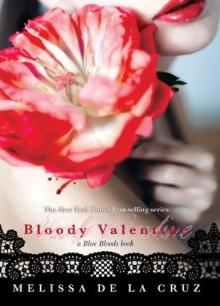 Bloody Valentine bb-6
Bloody Valentine bb-6 Golden
Golden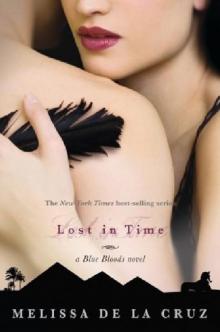 Lost in Time_A Blue Bloods Novella
Lost in Time_A Blue Bloods Novella Alex and Eliza--A Love Story
Alex and Eliza--A Love Story Blue Bloods: Keys to the Repository
Blue Bloods: Keys to the Repository Birthday Vicious (The Ashleys, Book 3)
Birthday Vicious (The Ashleys, Book 3) Keys to the Repository
Keys to the Repository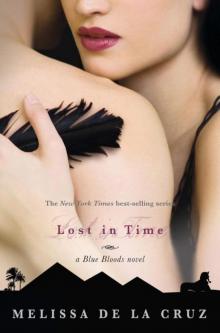 Lost In Time (Blue Bloods Novel)
Lost In Time (Blue Bloods Novel) Stolen
Stolen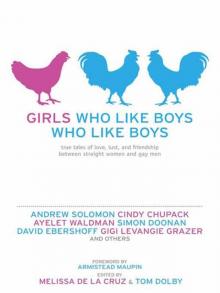 Girls Who Like Boys Who Like Boys
Girls Who Like Boys Who Like Boys the au pairs crazy hot
the au pairs crazy hot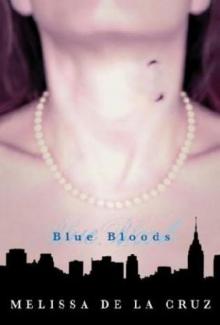 Blue Bloods bb-1
Blue Bloods bb-1 Witches 101
Witches 101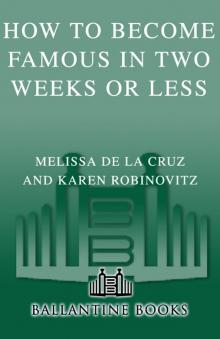 How to Become Famous in Two Weeks or Less
How to Become Famous in Two Weeks or Less Frozen hod-1
Frozen hod-1 Jealous? (The Ashleys, Book 2)
Jealous? (The Ashleys, Book 2) Misguided Angel (Blue Bloods)
Misguided Angel (Blue Bloods) Winds of Salem: A Witches of East End Novel
Winds of Salem: A Witches of East End Novel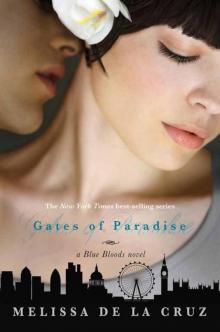 The Gates of Paradise
The Gates of Paradise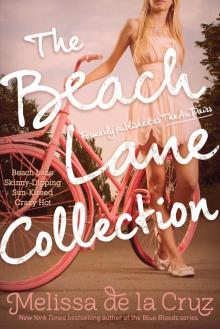 Beach Lane Collection
Beach Lane Collection Wolf Pact, The Complete Saga
Wolf Pact, The Complete Saga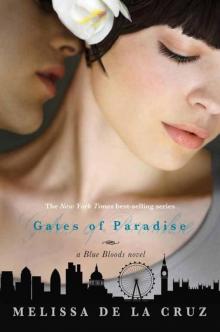 Gates of Paradise, The (Blue Bloods Novel)
Gates of Paradise, The (Blue Bloods Novel)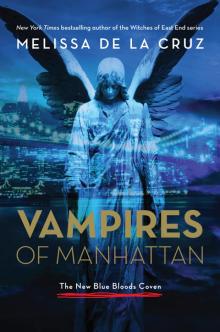 Vampires of Manhattan
Vampires of Manhattan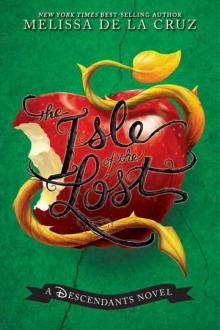 Isle of the Lost
Isle of the Lost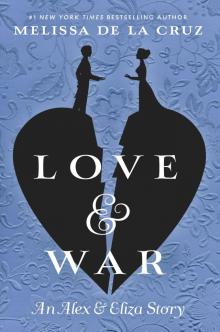 Love & War_An Alex & Eliza Story
Love & War_An Alex & Eliza Story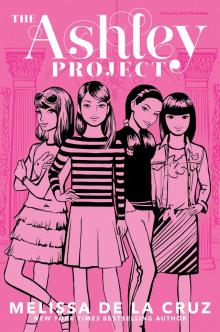 The Ashley Project
The Ashley Project Love & War--An Alex & Eliza Story
Love & War--An Alex & Eliza Story